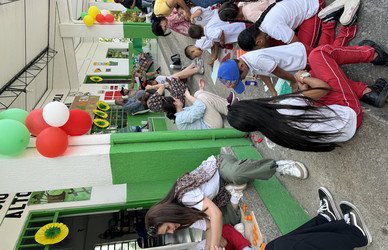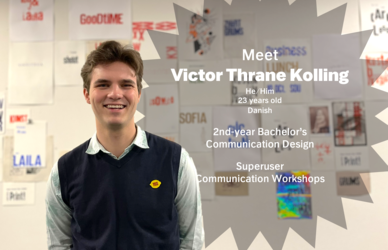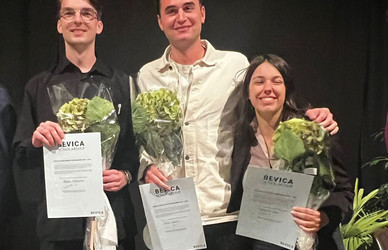Blind people gain expanded freedom of movement
In most cases blind citizens are denied the experience of a spontaneous bicycle ride and the wonderful feeling of the wind in their hair. But industrial designer Kasper Rene Hansen made up his mind to invent a completely new mode of transport that is accessible for the blind and visually impaired. And with his graduation project he is well on his way to completing his prototype:
“The product is a combination of automatic and manual steering. The front wheels turn automatically due to the built-in GPS and robotics technology that is guided along a route to a destination that has been pre-selected via an app. The propulsion on the other hand occurs by means of old-fashioned bicycle pedals so that the blind person has the opportunity to set the speed herself. The vehicle also has a number of sensors on the front shield that ensure automatic braking in case of an obstacle,” Kasper Rene Hansen explains giving a succinct description of the product.
Steering system in LEGO blocks
In the development of the prototype numerous considerations and user insights have been brought into play, knowledge that the design student has acquired over several time periods. He has conducted interviews with the Danish technical aids centre IBOS (Institute for the Blind and Visually Impaired), held repeated, solid sparring sessions with the Danish Technological Institute Odense, and finally tested the prototype vehicle at Synscenter Refsnæs (the National Centre for Visually Impaired Children and Youth in Denmark), where a group of blind citizens volunteered their physical abilities and their nerves to test four models in the centre’s gymnasium.
One of the first challenges was to decide whether the steering wheel should turn with the wheels. Some of the prototypes were therefore built with a steering system made out of LEGO blocks which Kasper Rene Hansen operated via a wireless controller. But the verdict was that the future users preferred a fixed steering wheel.
“The wheel functions more as a support and not as an actual steering wheel. When it turns automatically they resisted, and that made the ride less safe.”
So now the steering wheel is fixed, and there is more volume at the front of the vehicle. Two of the three wheels are placed in front together with the protection shield in order to “… protect against what is coming towards them,” Kasper explains.
They dare to cycle
In addition, the vehicle has a seat with a safety belt and a rechargeable battery with a life of up to 80 kilometres; a wireless head set has also been connected, which informs the driver of what is coming up ahead. Finally the blind people who participated in the development work had a strong desire that the vehicle could be carried along anywhere, even when it is not in use. Kasper Rene Hansen solved that problem as well:
”By means of some small handles the blind person can collapse the vehicle herself, and it ends up the size of a large suitcase on wheels which can easily be taken along on a bus or a train or be carried into a flat. If they had to leave the vehicle at a station for example, many imagined that they would have problems finding it again.”
Numerous challenges have been thought through and tested, and the immediate feedback from the test panel was a unanimous two thumbs up.
”In a questionnaire I developed at the start of the project I asked openly:
”If you could ride on a bicycle path by yourself, would you dare to do that? Eighty per cent of the replies were positive. The challenge for many visually impaired individuals is the dependence upon others in relation to their freedom of movement. They have very limited opportunities to spontaneously ride from A to B or simply out into nature,” says Kasper Rene Hansen.
With his graduation project, meeting this challenge is now within reach as well as making bicycle paths accessible for the blind and visually impaired.



